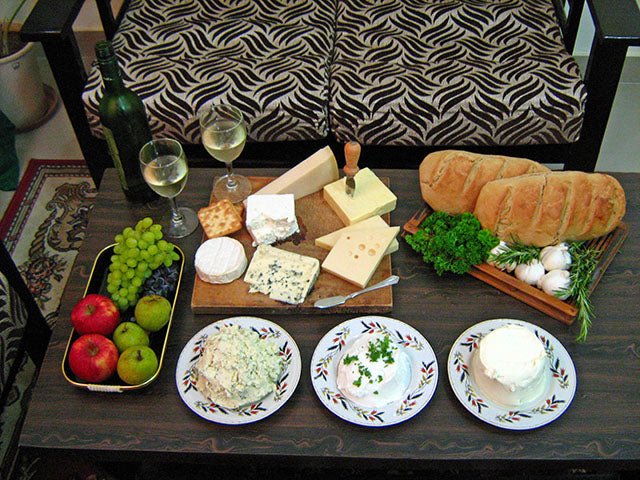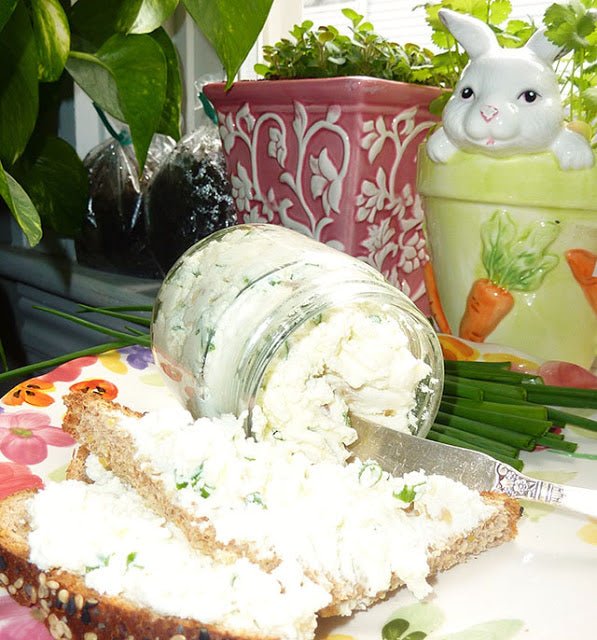 |
| Photo from JVC’s Science Fair Projects |
What is soured milk?
There are 3 kinds of milks which are commonly referred to as soured milk in recipes:
1.) In baking, soured milk is frequently made by adding 1 tablespoon of either vinegar or lemon juice to a cup of milk and then waiting 5 minutes for it to curdle. In addition to soured milk, another popular dairy product that utilizes similar fermentation processes is sour cream, which has been a staple in many kitchens for its unique flavor and versatility in cooking. Understanding the role of bacteria in these dairy transformations can enhance your culinary creations and help you achieve the desired consistency and taste in your dishes. When making soured milk for recipes, understanding how to properly acidify and heat milk is crucial. This process is similar to what is done when adding culture and mold powders in cheese-making, ensuring the desired texture and flavor in your final product. This is actually acidified milk.
2.) Soured milk is also made by adding bacterial cultures. Other names for this are fermented milk, cultured milk and buttermilk. (Most of our customers make soured milk by adding our buttermilk culture to pasteurized milk.)
3.) When raw milk (not pasteurized) is left at room temperature, it either sours or “clabbers” (gets thicker), depending on the temperature and humidity. The enzymes and probiotic bacteria in the milk use up the lactose (milk sugar) which causes the milk to taste less sweet. This milk is actually healthier than fresh milk because of the growth of these good enzymes and bacteria.*
In the recipes here, you can use any of the above methods and any kind of milk – goat, sheep, cow, etc.
Recipes by Richel Parreno
Six months ago we did a series of three articles about Richel Parreno, an American living with her in-laws in the Philippines after a terrible flood had all but destroyed their home. Richel was trying to educate them about ways to use the milk from their goat. Without a stove, she developed recipes for cooking with goat’s milk on an open fire and for making “Velveeta.” She also sent us the recipes below for using soured milk (which she made by the third method described):
Biscuits and Gravy
Soured Milk Biscuits:
2 cup flour
1/2 tsp baking soda
2 Tbsp butter
1 egg
1/3 cup soured milk
pinch salt
Pre-heat a griddle (or heavy frying pan) to the point where a drop of water will sizzle, but not immediately evaporate.
Mix flour, baking powder and salt. Cut flour into butter. Add liquids to make a soft dough.
Break into 8 to 12 equal pieces, work out to 1/2 inches thick and dust with flour.
Add
a few drops of oil or a knob of butter to the griddle and fry the cakes
over a low heat until browned, about 5 minutes, on each side. The heat
should be low enough that you can step away for a moment without
worrying about it.
Serve smothered in gravy (below).
Soured Milk Gravy:
2 Tbsp butter (or pan drippings)
1 onion (finely chopped)
2 Tbsp flour
1/2 cup soured milk
1/2 cup water
pinch salt and pepper (or to taste)
Saute onion in butter until translucent.
Add buttermilk and heat to a simmer.
Dissolve flour in water. Add to buttermilk. Stir until thickened.
Season with salt and pepper.
Serve hot.
This
was very popular with my test subjects. Carnivores might want to
replace the butter in the gravy with sausage or bacon grease.
——
Basic Soured Milk Cake
3/4 cup unsalted butter, softened
1 1/2 cups sugar
3 large eggs
2 cups flour
1 tsp baking powder
1 tsp baking soda
1 cup soured milk
1 1/2 tsp vanilla
Preheat
oven to 350F with rack in the middle of the oven.
Butter cake pans and
line the bottoms with wax paper or parchment paper cut to fit. Butter
the paper.
Beat the butter and sugar in a large mixing bowl until light and fluffy.
Beat in eggs one at a time.
Mix
the flour with the baking powder and baking soda.
Add one quarter of
the dry mixture to the butter-egg mixture and then add the vanilla and a
third of the buttermilk.
Repeat beginning and ending with the flour
mixture and scraping well after each addition.
Pour the batter into
the prepared pans and spread out evenly.
Bake 25 to 30 minutes or until a
toothpick inserted into center comes out clean.
Cool in pans of a rack for 5 minutes. Turn pans onto the rack, remove parchment paper or and cool completely before frosting.
I
had to use my make-shift camp dutch oven for this, since I don’t have
an oven. It’s got a great sweet and sour tang to it. For frosting, I
prefer a brand-name sweetened whipped cream topping.
——
Pancakes & Moskavado Syrup
1 cup flour
1 tsp baking soda
2 tbsp oil
1 egg
1 cup soured milk
pinch salt
Pancakes:
Mix dry ingredients together in a container which can be used to pour batter onto a prepared griddle. Mix in liquids.
Heat
griddle (or frying pan) to the point where a drop of water sizzles but
does not evaporate immediately, and lightly grease the griddle.
Pour
about 1/4 cup of batter per pancake onto the griddle.
Flip over
pancakes when the uncooked surface begins to bubble.
Makes 10 to 12
pancakes.
Syrup:
1 cup water
2 cups dark brown sugar
pinch salt
Bring water and salt to a boil.
Add sugar, stirring with a fork to make sure sugar is mixed into liquid until dissolved.
Bring to a boil, then cool to a simmer. Cook until thick, stirring frequently.
Pancakes
are a total unknown out here. Can you believe it? I have to cook them
one at a time in a wok, since I don’t have a griddle or frying pan.
——
Yakult
1 quart soured milk
1 pack sweetened, powdered drink mix (your choice of flavor)
Combine and chill for a refreshing, probiotic drink that’s higher quality and lower cost than that name-brand stuff.
——
Naan (on stove top)
Serves: 6 Naans
1 tsp active dry yeast
1 tsp sugar
1/2 cup warm water
1 egg
3 Tbsp soured milk or yoghurt
2 Tbsp oil
2 1/2 cup flour, plus more for dusting
1 tsp salt
butter
Instructions:
1.
Put water and first sugar in a bowl. Add yeast and keep it covered on
counter top for about 10 minutes or till its frothy. If it doesn’t get
frothy, your yeast is too old.
2. Meanwhile, combine flour, salt and remaining sugar in a big bowl. Mix well.
3. Once yeast mixture is frothy, add sour milk, egg and oil. Mix well.
4. Pour yeast mixture into dry flour mixture.
5. Mix well.
6.
Use your hands and knead the dough until smooth and elastic. (You will
find that there is not enough flour in it. But do not add any. It is
supposed to be sticky and very soft. A little oil on your hands will
help.)
7. Now, cover it with damp cloth and let it rest or ferment on warm place for 3 to 4 hours.
8.
After that it will be double to triple in size. Punch it down (the
dough will be sticky), and divide it into 6 equal portions. Cover until
ready to use.
9. Now prepare a bowl of water and a bowl of dry flour on your counter before you start making naan.
10. While you’re rolling a naan, heat a greased cast iron skillet (or Tava, if you have one) on high heat. Keep the lid handy.
11.
Dust your rolling board with some flour. Take one ball and work it in
an oval shape about 8 inches long and 4 inches wide. Use some flour if
needed.
12. Now apply some water to one surface of a naan.
13. Once skillet is hot, put the watered surface down on the skillet. The skillet should be just smoking hot.
14. It will start to bubble, sprinkle a little water around the sides. Cover and let it cook for 1 minute.
15. Then flip it and cover immediately. Let it cook for 40-50 seconds.
16. Remove it from the pan and brush it with some butter and serve hot or put in an insulated container.
17. Repeat same with rest of dough balls. Re-grease the pan as needed.
A
freshly made yeast bread is quite a treat around here. And that’s hard
to do when you don’t have an oven. I’m very glad to have found this
recipe.
——
* Don’t confuse sour milk with rancid milk. Raw milk sours and is
wonderful for cooking and some cheesemaking. Pasteurized milk goes
rancid, and is more like rotten meat. Throw it out.



















































































































































